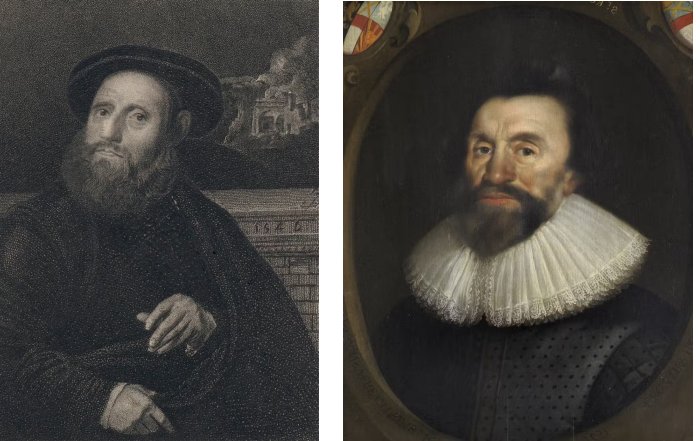How Henry VIII Accidentally Changed The Way We Write History
AncientPages.com - In 1534, King Henry VIII infamously broke away from the Catholic Church, becoming the head of the Church of England. Following this, two lesser-known acts were passed, the Suppression of Religious Houses Act 1535 and the Suppression of Religious Houses Act 1539 (also known as the “two Acts of Dissolution”).
Portrait of Henry VIII - After Hans Holbein the Younger (1497/1498–1543). Walker Art Gallery
These acts were the legal instruments of what is now known as the dissolution of the monasteries, a long process throughout which the hundreds of priories, convents, friaries, and other religious houses which fell under the English monarch’s rule saw their holdings confiscated by the Crown. In doing so, Henry unwittingly set in motion a series of events that would forever change how scholars of English history would access the primary sources used in research.
Because monasteries had served various roles throughout history, the dissolution had wide-ranging consequences. It changed the landscape of England, with religious buildings slowly entering private hands – but it also changed the scholarly landscape.
Many of Britain’s early historians came from monasteries (often in the form of chroniclers), including Gerald of Wales, Bede the Venerable and Roger Bacon. As record-keepers, they also preserved the primary sources that continue to be studied by researchers today.
Manuscripts, like the religious houses’ other possessions, slowly changed hands in the decades following the dissolution. The king took several manuscripts for himself and more were taken and hidden by former members of the orders, or local inhabitants. Likely thousands disappeared.
The extent of the loss, while difficult to estimate, was extensively researched by Anglo-Saxonist and palaeographer (historical handwriting analysis expert) Neil Ripley Ker in his book, Medieval Libraries of Great Britain which was first published in 1941. This research is now available as a continually updated database through the combined efforts of current scholars.
Where did the manuscripts go?
Over the past decades, bibliographical research has shown that some were gathered by local, and often little-known, collectors. As for the rest, the writings of contemporary antiquaries (the people interested in the material remains of the past) provide precious information on what existed before the dissolution took place, how much disappeared, and how.
From 1533, English poet and antiquary John Leland undertook the arduous task of inventorying the most important manuscripts from the monastic houses, listing his work to date in a then-unpublished address commonly known as the Newe Yeares Gyfte, in 1546. Meanwhile, Leland’s associate John Bale compiled a Summary of the Famous Writers of Great Britain, founded upon Leland’s work and first published in Latin in 1548, for which the preparatory notes survive in Oxford’s Bodleian Library.
Left: John Leland by Thomas Charles Wageman (1824). National Portrait Gallery; Right: Robert Cotton by Cornelis Janssens van Ceulen (c. 1629). Trinity College, Cambridge
Bale’s preface to the Newe Yeares Gyfte tells us that many of the manuscripts ended up cut up for use as candlesticks or boot polishing cloth, some were sold to foreign nations, and many to book binders.
Such recycling had already taken place in the past. The membrane (treated animal skin, also known as parchment or vellum) from which most manuscripts were made could be reused to make new books, notably as binding material, and also had less obvious but not less useful afterlives. It would continue for many years to come, too. Notably, one of the copies of the Magna Carta allegedly had to be rescued from a tailor’s shop in 1629.
The Magna Carta in question found its way into the collection of antiquary Sir Robert Cotton. Like other collectors before him, Cotton sought to preserve the witnesses of British history, in particular, the now-dispersed monastic manuscripts. His collection still survives today, as the Cotton manuscripts became one of the foundational collections of the British Library.
The dissolution itself came at a turning point in historical methods. The 16th century saw the spreading through England of a new intellectual movement coming from Italy, where it had begun over a century earlier: humanism. Renaissance humanism was concerned (at first) with the study of the classical world, eventually producing a new culture of learning involving the re-evaluation of historical sources (including the aforementioned manuscripts).
On the continent, this often involved consulting the texts in the monasteries themselves. In England, where the monasteries no longer existed, these sources found their ways into the hands of the scholar-collectors who wished to use them, like Matthew Parker and Cotton.
Neither Parker nor Cotton limited themselves to gathering these documents. Their libraries were the centre of research circles, which used, edited, and sometimes published original manuscripts using another continental creation – the printing press. While antiquaries were not necessarily historians, and have generally been considered more interdisciplinary, their work facilitated historical research through both the preservation and the dissemination of primary sources.
Historical research has evolved a lot since the 16th century. The sources saved from destruction or dispersion at the time of the dissolution have been read, re-read, translated, studied, and contextualised in many ways since the days of the early antiquaries.
Henry VIII may have never intended to endanger these manuscripts. However, it is indisputable that the dissolution had a profound effect on English and indeed British scholarship, marking the minds of budding humanistic historians, and giving them unprecedented access to original documents.
Besides its impact on the historiography of its time, the dissolution could have drastically changed the sources we continue to use. Without the preservationist impulse of collectors, the surviving manuscripts may have well disappeared into tailor and cobbler shops, never to be seen again.
More than just a story of loss and destruction, the dissolution is also the story of efforts, both big and small, collective and individual, to preserve a country’s heritage in a time of great change and uncertainty.
Provided by The Conversation
This article is republished from The Conversation under a Creative Commons license. Read the original article.
More From Ancient Pages
-
 On This Day In History: Charlemagne Became The King Of The Franks – On Dec 5, 771
News | Dec 5, 2016
On This Day In History: Charlemagne Became The King Of The Franks – On Dec 5, 771
News | Dec 5, 2016 -
 On This Day In History: England’s Act Against Multipliers Signed Into Law – On Jan 13, 1404
News | Jan 13, 2017
On This Day In History: England’s Act Against Multipliers Signed Into Law – On Jan 13, 1404
News | Jan 13, 2017 -
 On This Day In History: The Battle of Mortimer’s Cross – On Feb 2, 1461
News | Feb 2, 2017
On This Day In History: The Battle of Mortimer’s Cross – On Feb 2, 1461
News | Feb 2, 2017 -
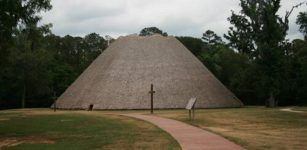 Did Democracy Have A Separate Origin In The Americas?
Archaeology | Jun 15, 2022
Did Democracy Have A Separate Origin In The Americas?
Archaeology | Jun 15, 2022 -
 One-Eyed Giants Fachan Were As Dangerous As Polyphemus And The Cyclops
Celtic Mythology | May 21, 2019
One-Eyed Giants Fachan Were As Dangerous As Polyphemus And The Cyclops
Celtic Mythology | May 21, 2019 -
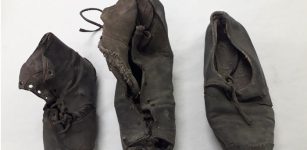 Mystery Of The Hidden Shoes Discovered In Ancient European Houses – What Is Behind This Bizarre Tradition?
Featured Stories | Oct 2, 2021
Mystery Of The Hidden Shoes Discovered In Ancient European Houses – What Is Behind This Bizarre Tradition?
Featured Stories | Oct 2, 2021 -
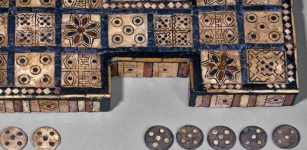 Royal Game Of Ur – One Of The Oldest Game Boards Discovered
Ancient History Facts | Feb 3, 2016
Royal Game Of Ur – One Of The Oldest Game Boards Discovered
Ancient History Facts | Feb 3, 2016 -
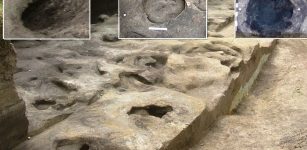 Sensational Discovery: 300,000-Year-Old Snapshot – Oldest Human Footprints From Germany Found
Fossils | May 12, 2023
Sensational Discovery: 300,000-Year-Old Snapshot – Oldest Human Footprints From Germany Found
Fossils | May 12, 2023 -
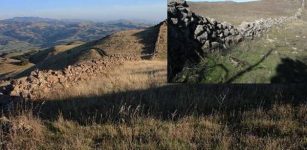 Mystery Of Great Wall Of California: An Ancient Unsolved Enigma
Civilizations | Sep 11, 2018
Mystery Of Great Wall Of California: An Ancient Unsolved Enigma
Civilizations | Sep 11, 2018 -
 On This Day In History: Unbelievable Flight Took Place – On Apr 28, 1939
News | Apr 28, 2016
On This Day In History: Unbelievable Flight Took Place – On Apr 28, 1939
News | Apr 28, 2016 -
 Ancient DNA Reveals Irish Are Not Celts – Irish Ancestors Came From Biblical Lands – Scientists Say
Archaeology | Mar 30, 2020
Ancient DNA Reveals Irish Are Not Celts – Irish Ancestors Came From Biblical Lands – Scientists Say
Archaeology | Mar 30, 2020 -
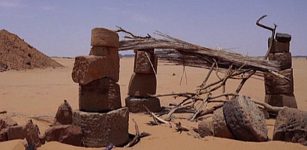 Illegal Gold-Hunting Diggers Damaged Sudan’s 2,000-Year-Old Historic Site
Archaeology | Aug 24, 2020
Illegal Gold-Hunting Diggers Damaged Sudan’s 2,000-Year-Old Historic Site
Archaeology | Aug 24, 2020 -
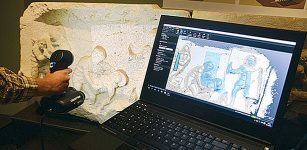 Archaeologists Use Laser Technology To Create Digital Models Of Ancient Artifacts
Archaeology | Jan 28, 2016
Archaeologists Use Laser Technology To Create Digital Models Of Ancient Artifacts
Archaeology | Jan 28, 2016 -
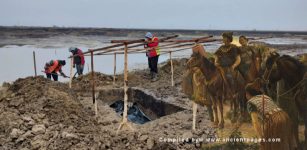 Hun Warrior’s Grave Filled With Gold Treasures Discovered In Romania
Archaeology | Feb 6, 2023
Hun Warrior’s Grave Filled With Gold Treasures Discovered In Romania
Archaeology | Feb 6, 2023 -
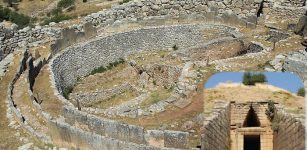 Mycenae Kingdom: Home To King Agamemnon And Tholos Tomb ‘Treasure of Atreus’
Civilizations | Jun 11, 2022
Mycenae Kingdom: Home To King Agamemnon And Tholos Tomb ‘Treasure of Atreus’
Civilizations | Jun 11, 2022 -
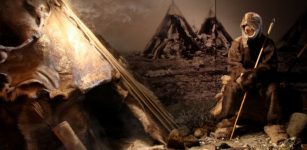 12,000-Year-Old Ice Age Stone Tools Found – Earliest Dated Evidence For Human Activity in Scotland
Archaeology | Oct 10, 2015
12,000-Year-Old Ice Age Stone Tools Found – Earliest Dated Evidence For Human Activity in Scotland
Archaeology | Oct 10, 2015 -
 First Human Culture Lasted 20,000 Years Longer Than Thought – New Study
Archaeology | Jan 11, 2021
First Human Culture Lasted 20,000 Years Longer Than Thought – New Study
Archaeology | Jan 11, 2021 -
 2,700-Year-Old Ceramic Sculpture Of Goddess Found In Aegean Sea
Archaeology | Feb 28, 2017
2,700-Year-Old Ceramic Sculpture Of Goddess Found In Aegean Sea
Archaeology | Feb 28, 2017 -
 How Human Ancestors Used Fire – New Methods Give Answers
Archaeology | Nov 2, 2022
How Human Ancestors Used Fire – New Methods Give Answers
Archaeology | Nov 2, 2022 -
 Giant 4,500-Year-Old Axe Grinding Site Discovered In Scotland
Archaeology | Dec 13, 2022
Giant 4,500-Year-Old Axe Grinding Site Discovered In Scotland
Archaeology | Dec 13, 2022


